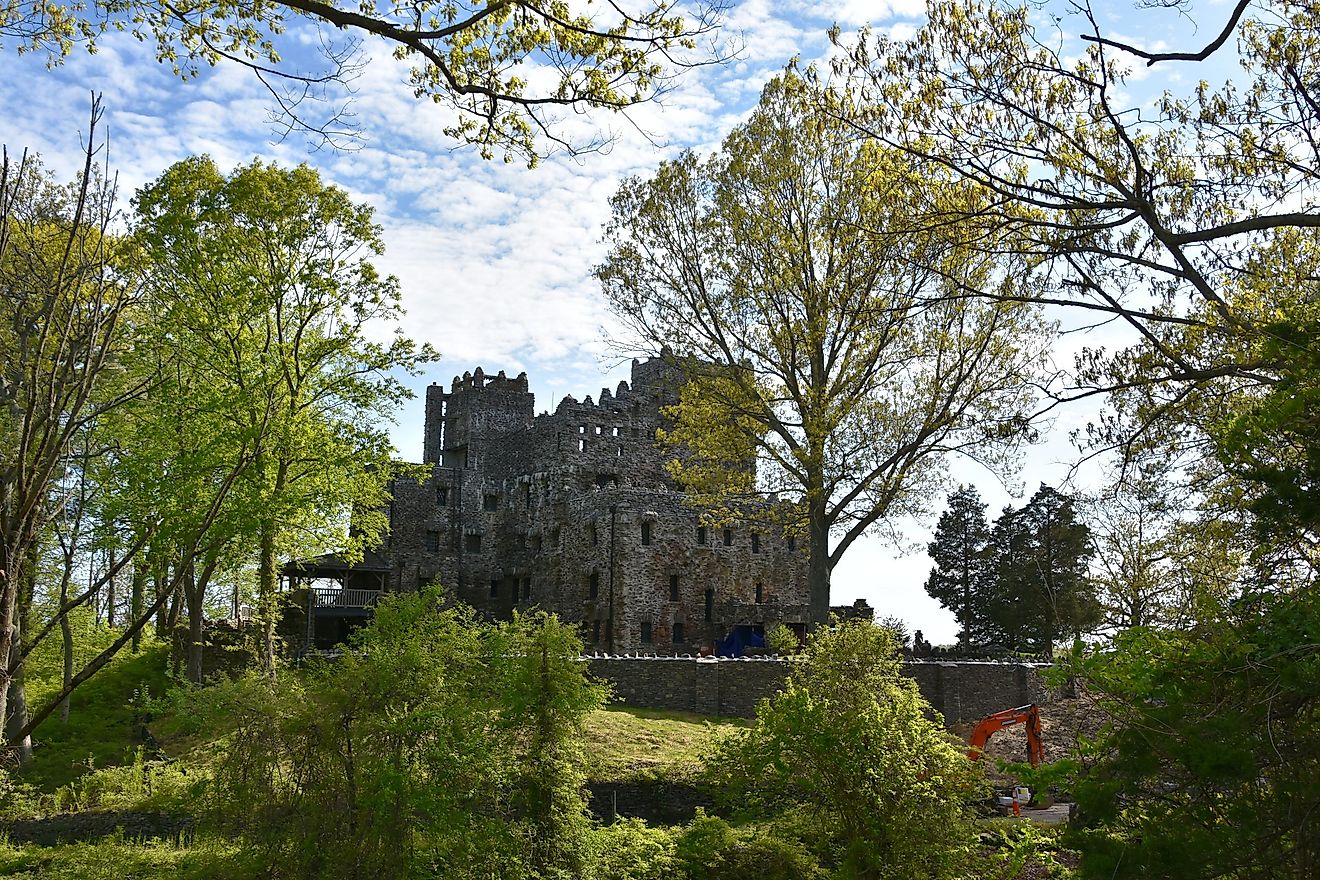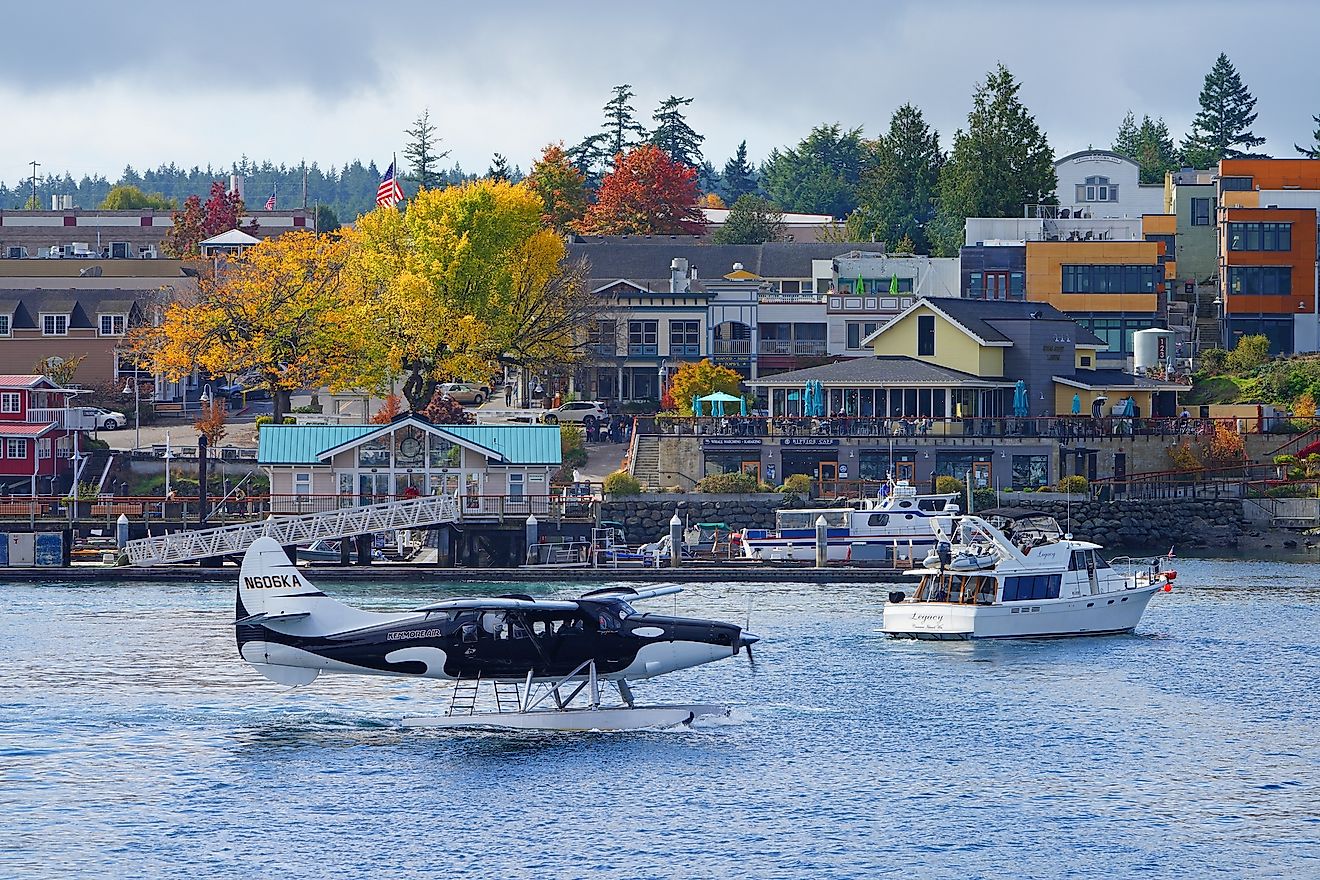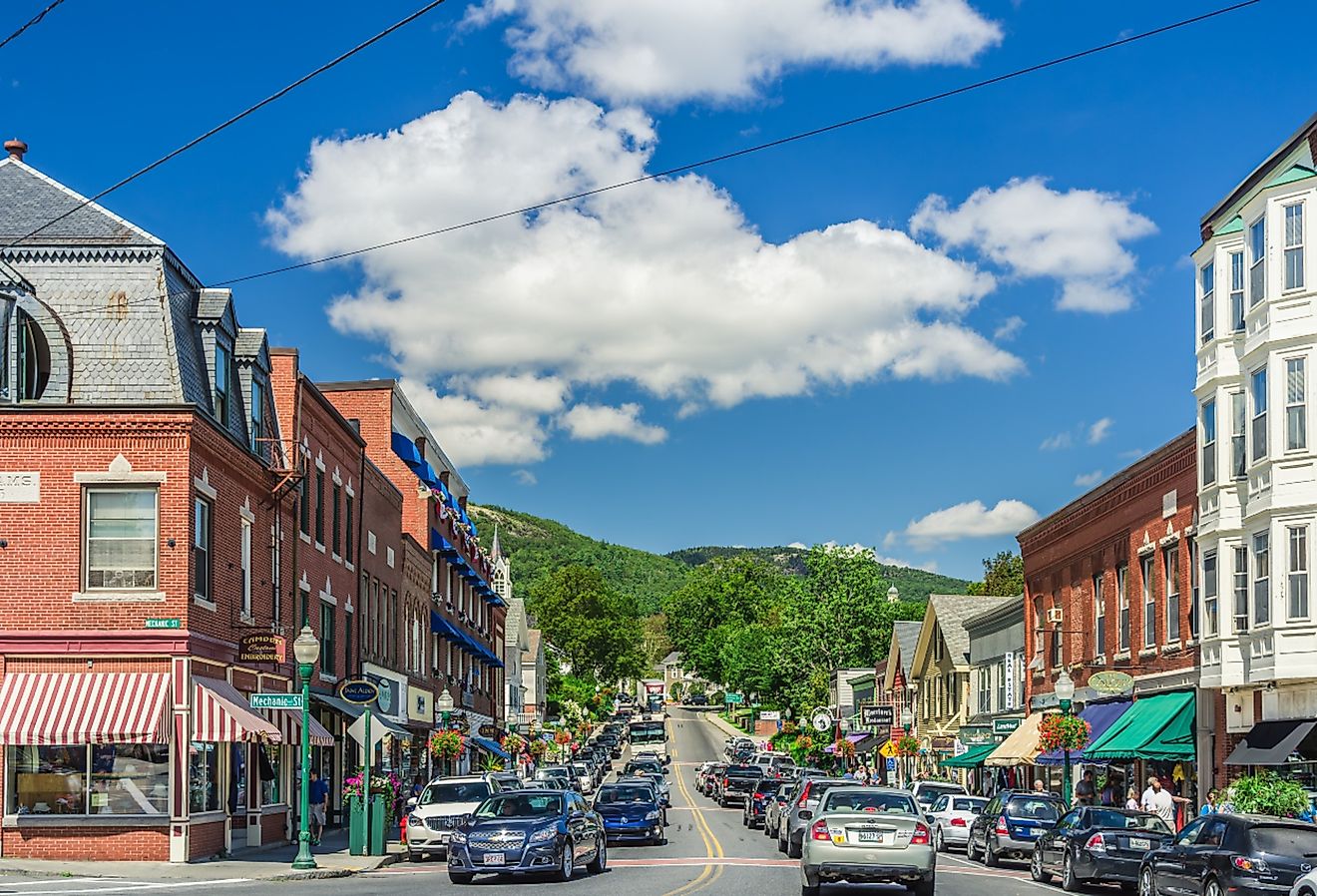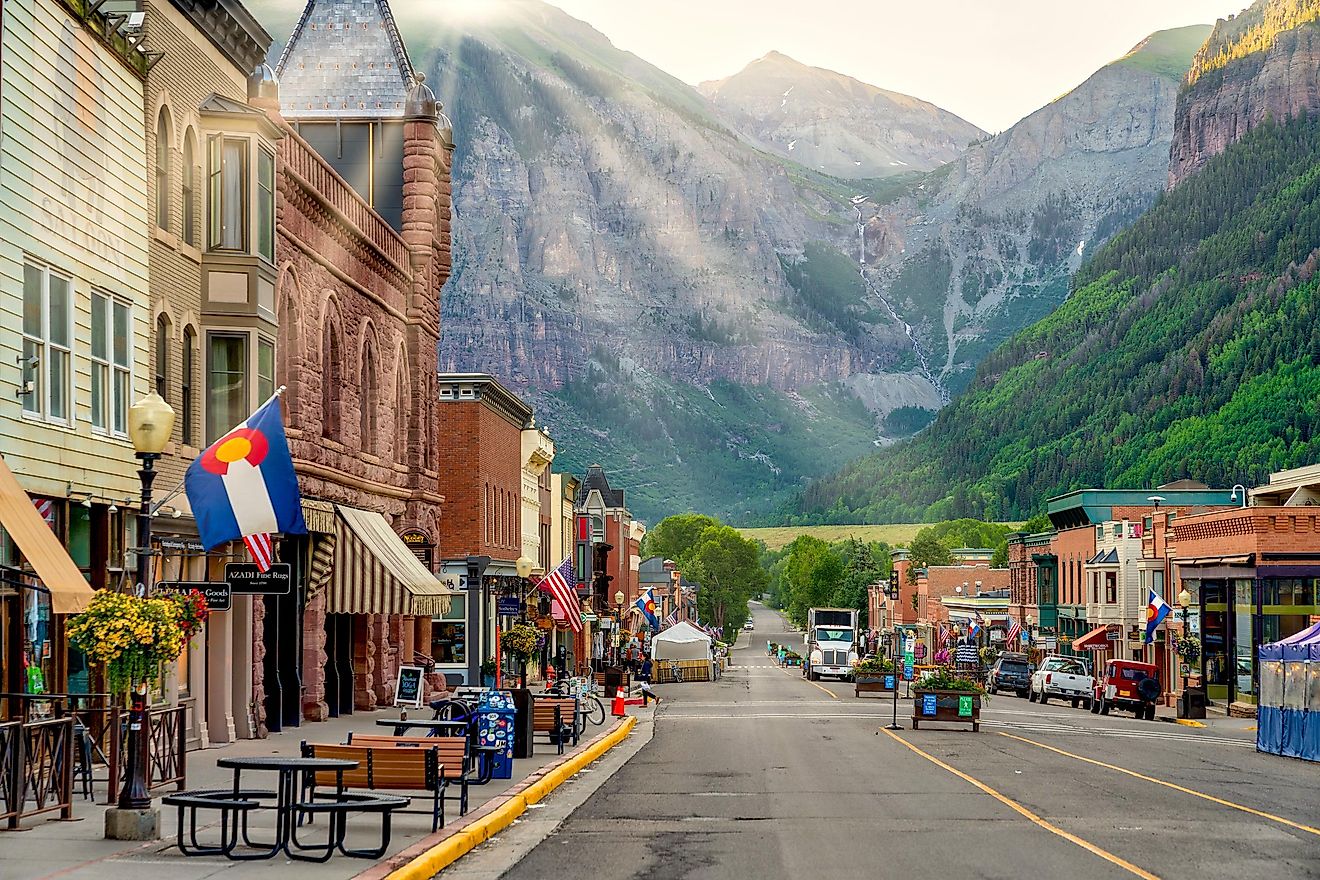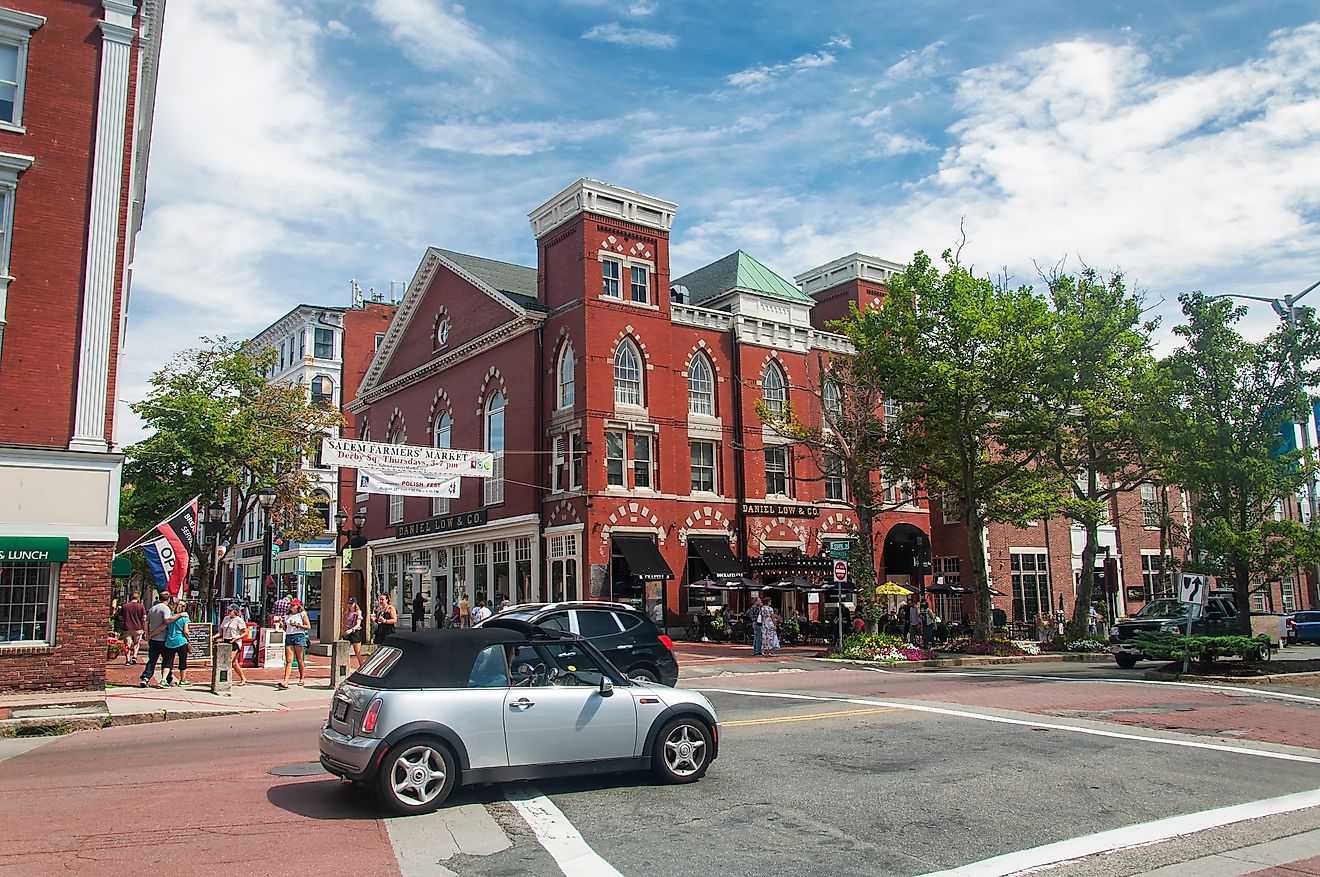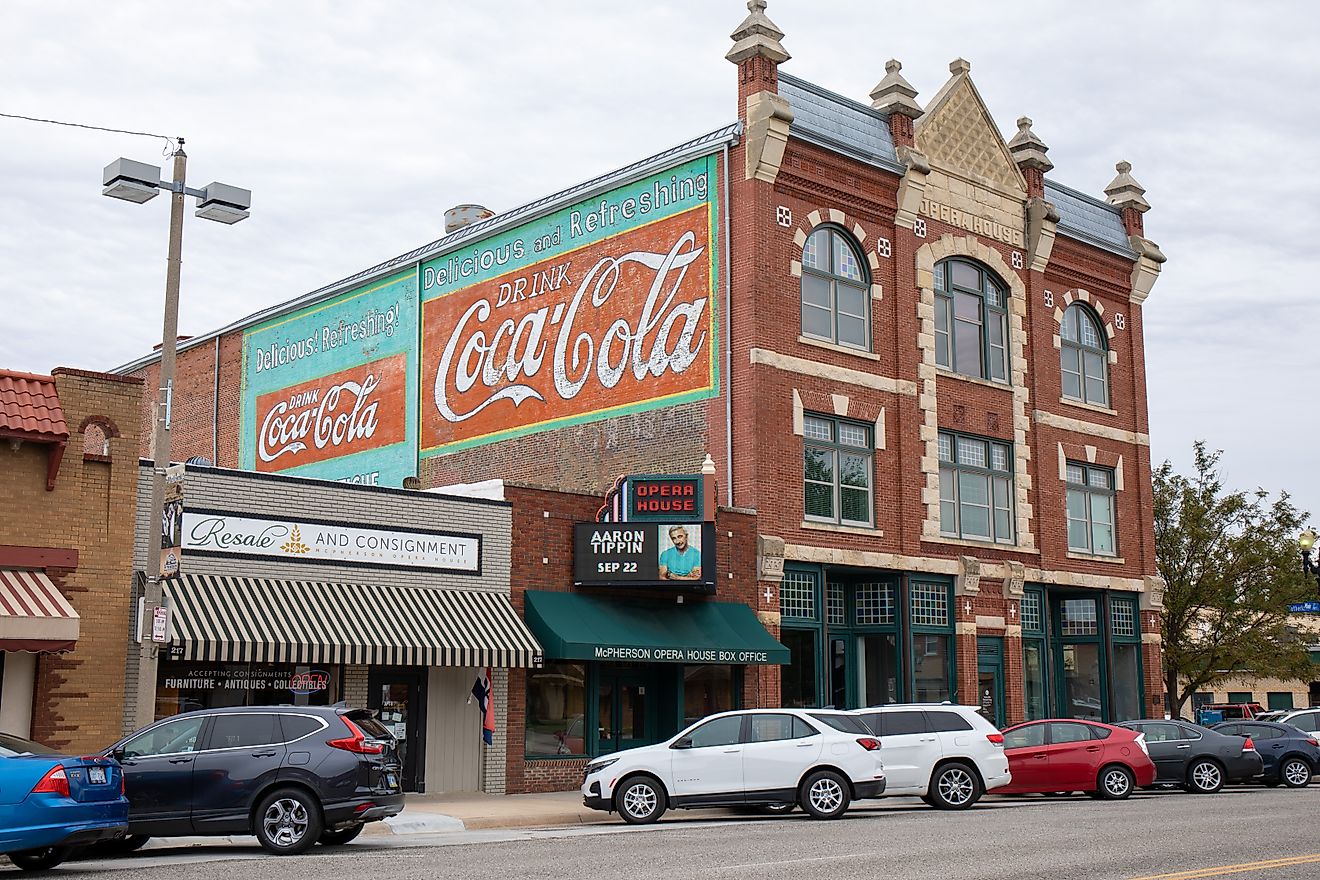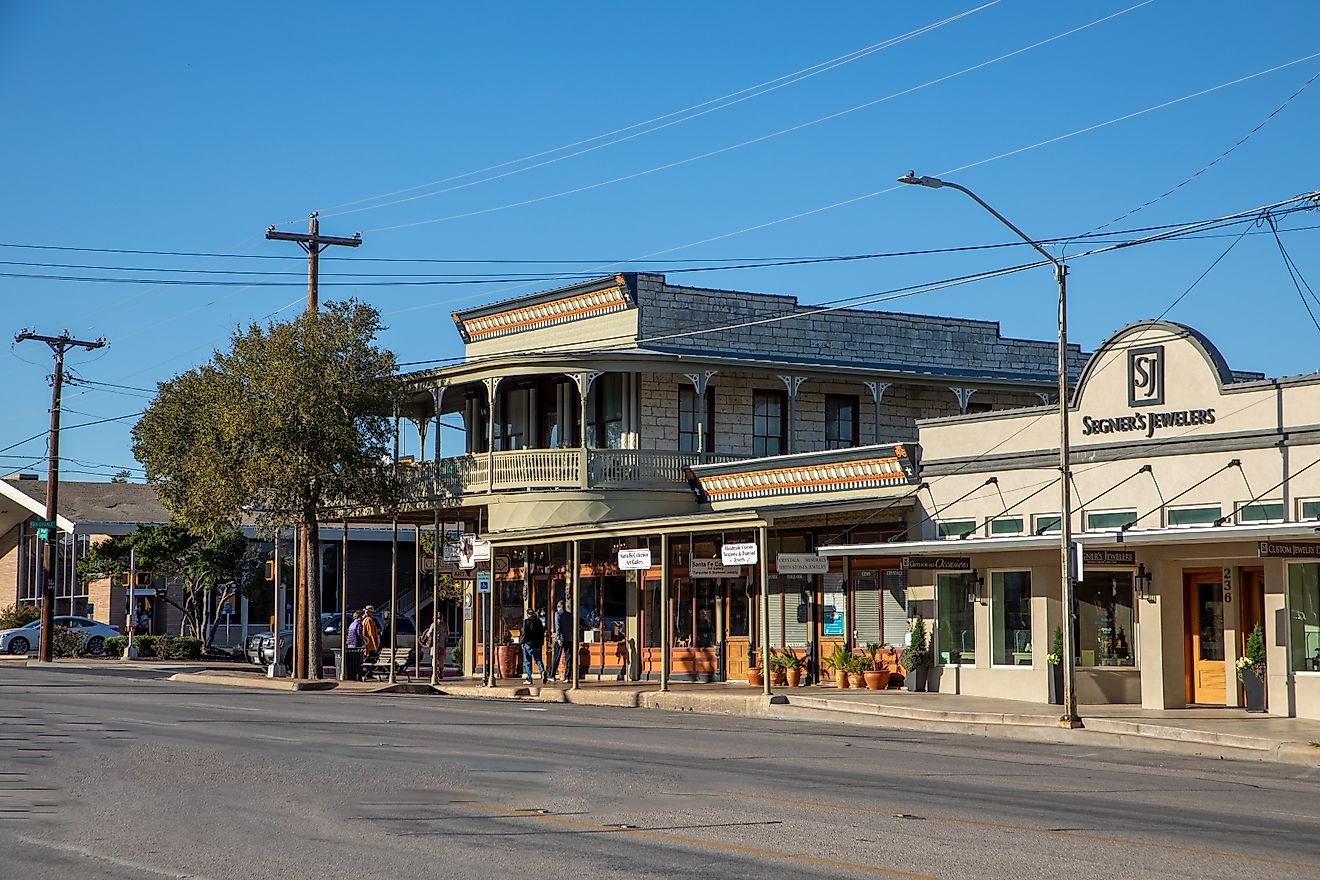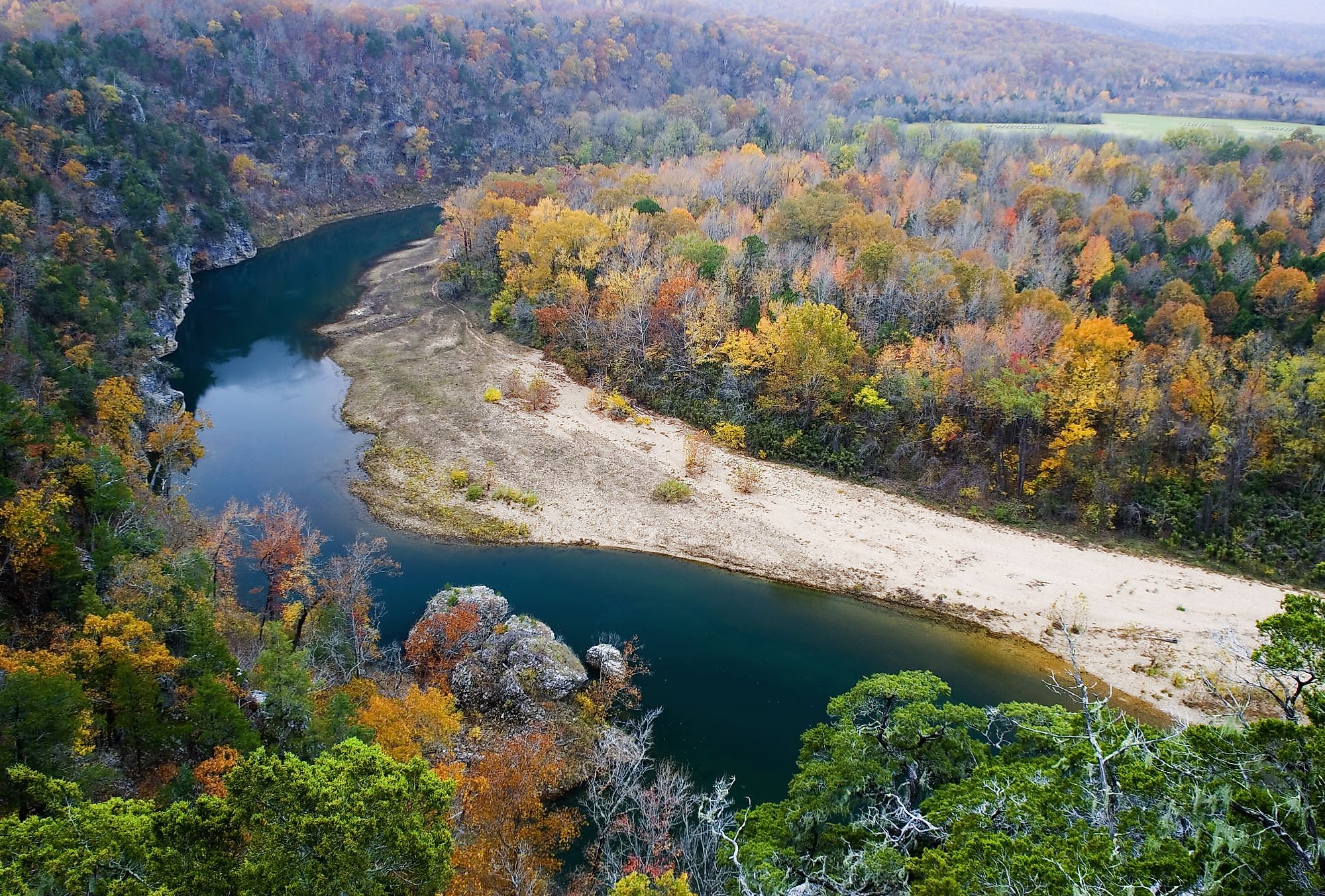
8 Best Attractions To Visit In Arkansas
Most people picture rolling hills, winding rivers, and maybe a diamond mine or two when they think of Arkansas, but The Natural State is also home to unforgettable attractions where history, nature, and creativity come together. From forested trails and soaring mountain views to art-filled galleries and glass chapels tucked into the woods, Arkansas offers experiences that feel both grounded and extraordinary. This list features eight of the best attractions in Arkansas to visit. Pack your hiking shoes, bring your sense of curiosity, and get ready to discover some of the most memorable places in Arkansas.
1. Hot Springs National Park (Hot Springs)
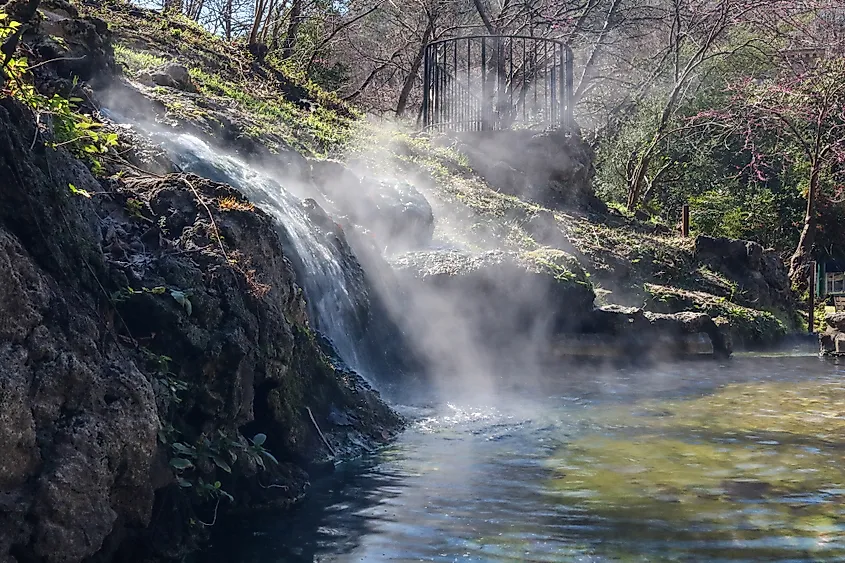
Located in the Ouachita Mountains, Hot Springs National Park is one of the most unusual national parks in the U.S. Interestingly, it’s part city, part wilderness. The centerpiece of the park is Bathhouse Row, a collection of eight ornate bathhouses built between the late 1800s and early 1900s. These structures were once frequented by everyone from Al Capone to Babe Ruth, drawn by the therapeutic waters flowing from 47 thermal springs.
The park was originally protected in 1832 by President Andrew Jackson, making it older than Yellowstone and technically the first federally protected natural site in the country. The town of Hot Springs grew up around the springs, blending urban development with preserved green space. Today, you can walk the Grand Promenade, a historic brick pathway behind the bathhouses, or soak in a traditional mineral bath at Buckstaff Bathhouse, which has operated continuously since 1912.
Surrounding the town is a canopy of pine and hardwood forest. Trails like Hot Springs Mountain Trail offer panoramic views of the valley below. At Hot Springs Mountain Tower, an elevator ride takes visitors 216 feet up for a sweeping look at the Ouachitas.
What makes this place truly special is its mix of manmade elegance and raw nature. You can step from the door of a turn-of-the-century bathhouse into a hiking trail within minutes. That seamless connection is rare and helps explain why Hot Springs remains one of the South’s most beloved wellness retreats.
2. Thorncrown Chapel (Eureka Springs)
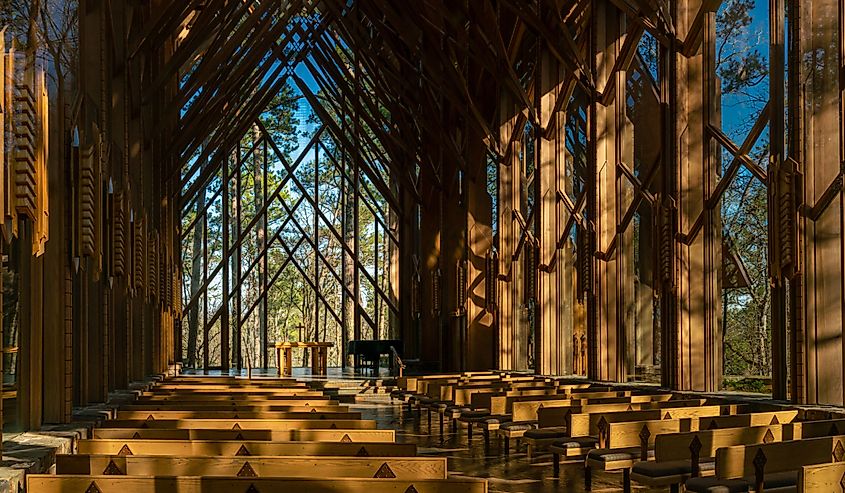
Hidden among the pines near Eureka Springs, Thorncrown Chapel is a masterpiece of organic architecture. Built in 1980 by architect E. Fay Jones, a protégé of Frank Lloyd Wright, the chapel blends so perfectly into its wooded surroundings that it feels like it grew straight out of the Ozark soil. With over 6,000 square feet of glass and 425 windows, the building invites the forest in: light dapples the wooden beams, and the silence is broken only by the sound of birds and wind through the leaves.
Jones designed the chapel for a retired schoolteacher, Jim Reed, who wanted to create a spiritual sanctuary for travelers and visitors. The project won instant acclaim and numerous architectural awards. In fact, Thorncrown Chapel is often ranked among the most beautiful and significant American buildings of the 20th century.
What makes this structure truly striking is its humble setting. Just off a winding road outside Eureka Springs, it seems to appear out of nowhere - an ethereal glass cathedral in the woods. Inside, the chapel is unadorned, almost minimalist, allowing the symmetry of the wood and the rhythm of the light to provide all the ornamentation needed.
The chapel remains open to visitors most days of the week and is a popular spot for small weddings and spiritual retreats. Despite its architectural pedigree, it’s not a museum piece. It’s a living part of the Ozark landscape, welcoming travelers looking for stillness, reflection, or simply a place to sit and take in the surrounding beauty.
3. Crystal Bridges Museum of American Art (Bentonville)
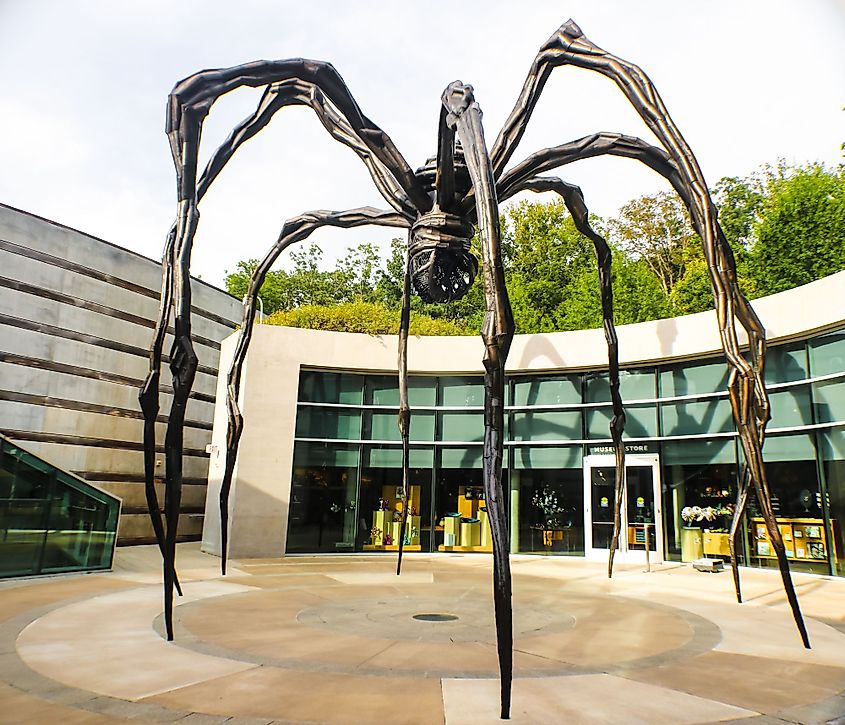
In the heart of Bentonville, Crystal Bridges Museum of American Art marries world-class art with a breathtaking Ozark setting. Founded by Walmart heiress Alice Walton and opened in 2011, the museum houses a vast collection of American masterworks: paintings, sculpture, and mixed media, from colonial portraits to contemporary installations. Works by Norman Rockwell, Georgia O’Keeffe, and Andy Warhol share space in this gorgeously designed, light-filled complex.
Designed by architect Moshe Safdie, the museum sits in a wooded ravine and incorporates two spring-fed ponds into its architecture. The curved copper roofs and bridge-like galleries make the building itself part of the experience. Outside, trails wind through 120 acres of native forest dotted with outdoor sculptures, giving art lovers and nature seekers plenty to explore.
One of the most surprising elements of Crystal Bridges is its free admission, made possible through the Walton family’s endowment. The museum also includes special exhibitions and a relocated Frank Lloyd Wright design — the Bachman-Wilson House — meticulously reconstructed on-site and open for tours.
More than just an art institution, Crystal Bridges reflects a larger cultural shift in northwest Arkansas, where Bentonville is fast becoming a hub for design, innovation, and tourism. The museum’s presence has helped reshape perceptions of the region, attracting artists, chefs, and entrepreneurs to what was once a quiet retail headquarters town.
Whether you’re an art connoisseur or just curious, Crystal Bridges offers a museum experience that feels immersive and deeply rooted in the landscape around it.
4. Buffalo National River (Northern Arkansas)
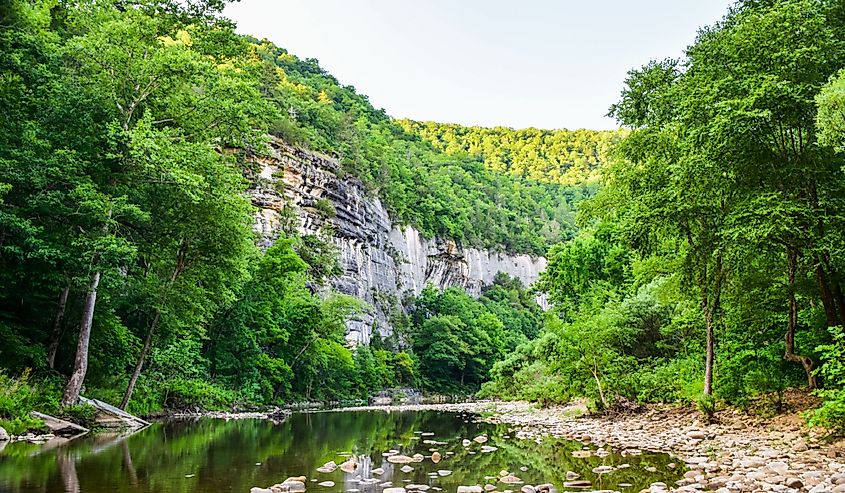
Running wild for 135 miles through the Ozark Mountains, the Buffalo National River is one of the last undammed rivers in the lower 48 states. Designated America’s first national river in 1972, this stunning waterway flows through a landscape of towering limestone bluffs, caves, hardwood forests, and waterfalls. It’s a paradise for canoeists, hikers, and campers who want a taste of raw, unspoiled Arkansas.
The river begins in the Boston Mountains and makes its way eastward through dense forest and narrow valleys. Along the way, you’ll pass places like Steel Creek, Tyler Bend, and Buffalo Point, each offering access points for paddling and trails with scenic overlooks. Canoe trips can range from a lazy afternoon float to multi-day wilderness adventures, depending on your skill level and the water conditions.
The region is also rich in wildlife, from deer and otters to bald eagles. You’ll find 200 species of birds here, making it a hotspot for birdwatchers. In spring, wildflowers blanket the forest floor; in fall, the hardwoods explode with color.
Historically, the area was home to Native American tribes and early European settlers, whose log cabins and root cellars can still be spotted along the trails. The National Park Service works to preserve not just the landscape, but the cultural history of the region.
Whether you want to paddle beneath bluffs, hike to Hemmed-In Hollow Falls — the tallest waterfall between the Rockies and Appalachians — or simply sit beside the water with a fishing pole, the Buffalo River offers some of the best nature Arkansas has to offer.
5. Mount Magazine State Park (Paris)
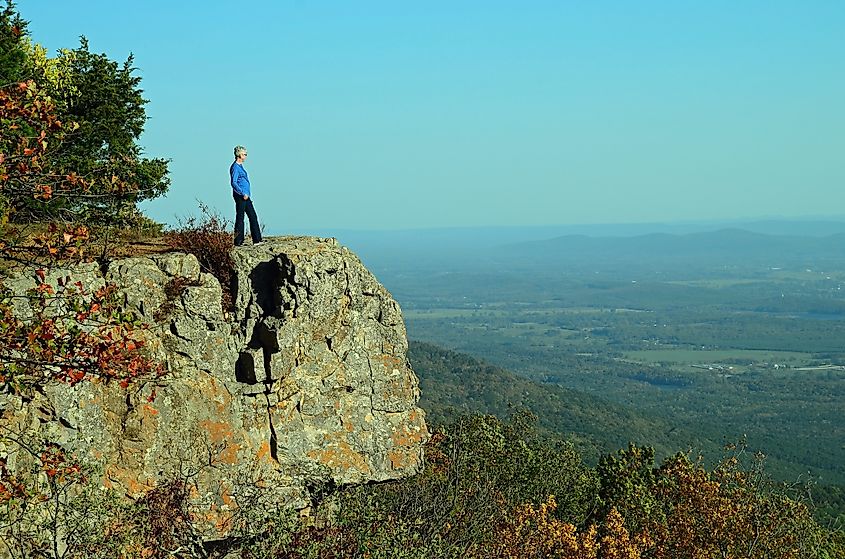
At 2,753 feet, Mount Magazine is the highest point in Arkansas, and the crown jewel of the Arkansas River Valley. But elevation is only part of the story. This mountaintop park offers panoramic views, a range of outdoor activities, and a peaceful lodge perched at the edge of a dramatic bluff, making it one of the most scenic and versatile destinations in the state.
Mount Magazine State Park was officially established in 1998, but the area had already long attracted hikers and campers. Its natural beauty and biodiversity are standout features. Rugged trails wind through oak-hickory forests and across sandstone ledges, offering chances to spot rare butterflies, songbirds, and black bears. The Signal Hill Trail takes visitors right to Arkansas’s true high point, while more daring travelers can try rock climbing or even hang gliding from designated launch sites.
The Lodge at Mount Magazine, with its large stone fireplace, is a perfect base for exploring the park or simply soaking in the view from the comfort of a rocking chair. Several cabins are also available for rent, tucked closer into the forest for a more private stay.
Because it’s so elevated, the mountaintop offers cooler temperatures in summer, brilliant foliage in autumn, and occasional snowfall in winter, making it a year-round getaway. Whether you’re hiking the trails, photographing sunsets from Cameron Bluff Overlook, or just relaxing on the lodge terrace, Mount Magazine gives you a literal and figurative perspective on the natural beauty of Arkansas.
6. Arkansas Post National Memorial (Gillett)
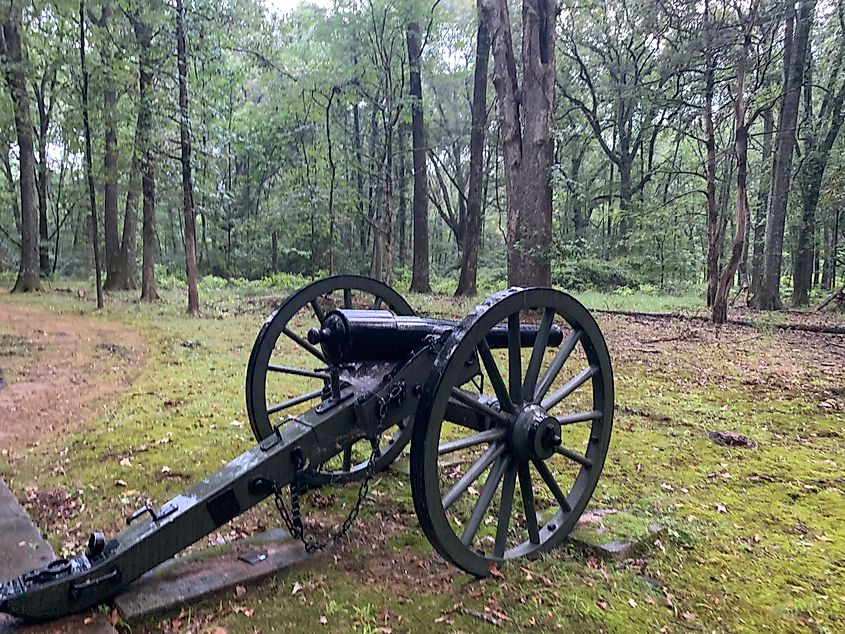
Situated along the quiet banks of the Arkansas River, Arkansas Post National Memorial marks the site of the first permanent European settlement in the lower Mississippi Valley. Originally founded by French explorers in 1686, this strategic outpost has served as a trading hub, a colonial capital, a Civil War battleground, and even the first capital of the Arkansas Territory.
Today, the memorial offers a serene, reflective setting where you can walk trails shaded by towering oaks and learn about over 300 years of layered history. The Visitor Center houses exhibits that span the eras, from Native American life and French colonial trade to the Civil War and beyond. Artifacts, interpretive panels, and a short film provide a clear sense of how the region evolved, both politically and culturally.
Outside, a walking path leads through meadows and forest to interpretive markers that show where the original fortifications once stood. Though little of the original post remains above ground, the landscape still feels charged with history. The park also includes a cemetery, memorials, and scenic viewpoints along the river, offering both educational and contemplative experiences.
What makes Arkansas Post especially compelling is its obscurity. Despite its significance, it’s rarely crowded, allowing for a quiet visit in a setting that once shaped the geopolitical fate of the Mississippi Delta. Birdwatchers will also appreciate the surrounding wetlands, which are part of the Mississippi Flyway and home to migratory species year-round.
More than just a historical footnote, Arkansas Post National Memorial is a reminder that American history didn’t just happen in big cities or along the coasts — it was shaped in places like this, where rivers met, cultures collided, and nations were born and lost.
7. Crater of Diamonds State Park (Murfreesboro)
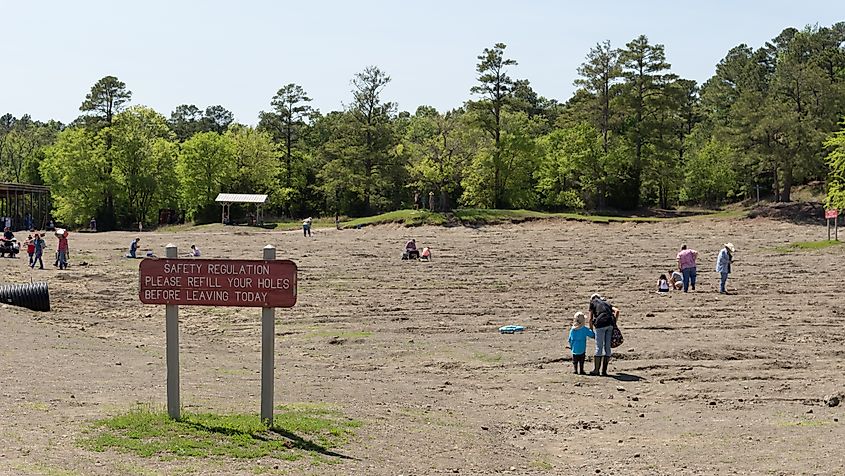
Where else in the U.S. can you spend the afternoon digging for diamonds, and then get to keep what you find? Only at Crater of Diamonds State Park in southwestern Arkansas. This one-of-a-kind destination sits on a 37.5-acre plowed volcanic crater, and it has produced more than 75,000 diamonds since it became a state park in 1972.
The site’s diamond history stretches back even further. The first diamond was discovered here in 1906 by a farmer, and for decades the land changed hands among hopeful prospectors and entrepreneurs. Eventually, it was acquired by the state and opened to the public as a place where anyone, regardless of age or experience, could search for gems.
One of the most famous finds is the "Uncle Sam" diamond, a whopping 40.23-carat stone unearthed in 1924. While none that size have been found since, there is always the possibility! Park staff are on hand to help identify your finds, and while most visitors go home with quartz or garnet, the thrill is in the possibility.
The park also includes walking trails, a water park for kids, and shaded picnic areas, making it a full-day destination for families. There’s even on-site camping if you want to extend your treasure hunt. And yes, digging gear is available for rent if you don’t bring your own.
Set amid pine forests and fields, Crater of Diamonds offers something rare: an outdoor experience that combines geology, history, and pure adventure. It’s not only a novelty, but a true Arkansas gem, in every sense of the word.
8. Christ of the Ozarks/Great Passion Play (Eureka Springs)

Overlooking the Victorian hillside town of Eureka Springs, the Christ of the Ozarks statue rises 67 feet into the sky — its arms outstretched, its gaze fixed over the wooded valley below. Built in 1966 by Gerald L.K. Smith as part of a larger religious attraction, the statue is made of white mortar over a steel frame and is visible for miles around. While its style is minimalist, its presence is anything but.
The statue is part of the Great Passion Play complex, a 167-acre property that also includes a massive outdoor amphitheater where a seasonal drama recounts the final days of Jesus Christ. The play typically features a cast of over 150 actors, live animals, and dramatic lighting effects, all set against a natural Ozark backdrop. The play is performed from May until November, and the surrounding trails are open from sunrise to sunset.
Visitors can also tour a Bible Museum, explore a Holy Land Tour with life-size recreations of historic sites, or walk through the Berlin Wall exhibit, which includes a 10-foot section of the original wall as a symbol of freedom and faith. The experience blends theatrical storytelling with religious devotion and local charm.
What makes this site especially intriguing is its setting. Eureka Springs is known for its winding mountain streets, Victorian homes, and healing springs, making the towering statue feel both surprising and somehow fitting. Whether you’re religious or not, the Christ of the Ozarks offers a moment of pause and reflection — and a bird’s-eye view of a uniquely Arkansan blend of spectacle, faith, and natural beauty.
Arkansas deserves a spot on any travel list, thanks to places like these that offer beauty, history, and a deep connection to the land. Sunlight streaming through Thorncrown Chapel, wide-open views from Mount Magazine, and peaceful trails along the Buffalo River create the kind of moments that stay with you. Many of these attractions remain uncrowded, which makes exploring them feel even more special. Travelers looking for inspiration, quiet adventure, or something a little different will find it here — without having to go far or fight through crowds. With its mix of natural wonder and cultural gems, Arkansas delivers more than most expect. Once you've experienced it for yourself, it just might become a favorite destination.
